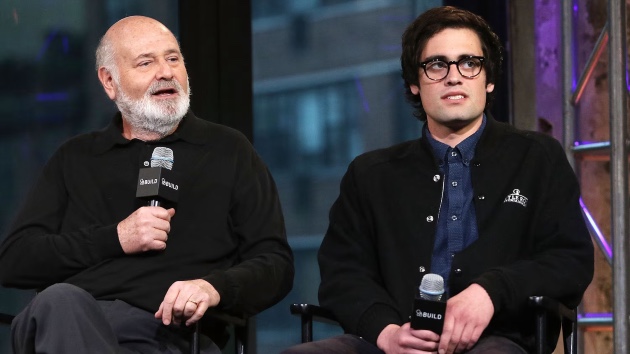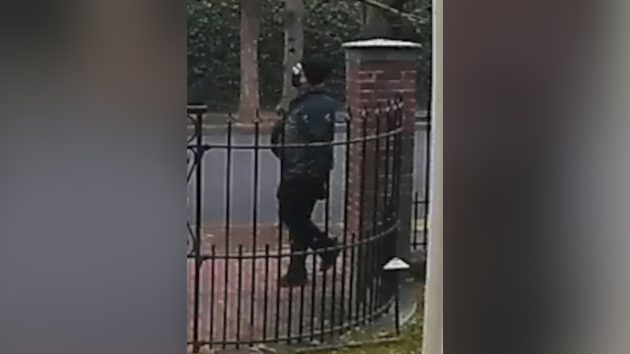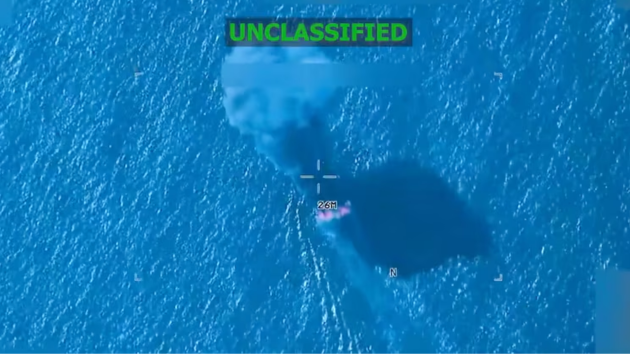How to photograph April 8’s solar eclipse with a camera or a smartphone
Written by ABC Audio ALL RIGHTS RESERVED on April 8, 2024

(NEW YORK) — “Eclipse Across America,” will air live Monday, April 8, beginning at 2 p.m. ET on ABC, ABC News Live, National Geographic Channel, Nat Geo WILD, Disney+ and Hulu as well as network social media platforms.
The historic total solar eclipse on April 8 is set to be one of the most photographed events this year.
In the U.S., 31 million people already live inside the path of totality and millions are likely to travel to cities within that path, watching the moon pass over and then completely block the face of the sun for a short period.
It’s a phenomenon that almost every viewer will want to capture in a photograph, but it may be difficult to figure out what’s the best gear to use or how to set up.
Photographer Stan Honda, who is based in New York City, has photographed three total solar eclipses and at least 10 partial solar eclipses. He gave his tips to ABC News on the best ways to capture this rare celestial event.
Before you start taking pictures, wear eclipse glasses
One of the most important things, before and as you are setting up equipment, is to never look up at phases of the partial eclipse — when the moon is partly obscuring the sun — without wearing eclipse glasses.
Looking up with the naked eye or regular sunglasses can burn the retina, leading to long-lasting — even permanent — damage. The glasses can only be removed during the totality period, when the sun is completely blocked by the moon.
Make sure the glasses are certified ISO 12312-2, which is the international safety standard for products designed for direct viewing of the sun.
This standard does not apply to solar filters that fit in the front of devices such as camera lenses, so make sure you’re purchasing a proper solar filter to fit when photographing the partial phases of the eclipse.
Keep the setup simple
If you’ll be taking photographs with a professional or digital camera, Honda recommends keeping the set-up as simple as possible.
The type of lens you use will depend on what kind of photographs you would like to capture, but Honda says he tries to use two types of lenses for his photographs.
The first is a long telephoto lens to get a close view of the sun during the eclipse and the second is a wider angle lens to capture both the eclipse and the landscape around you.
“To me, that’s almost a more interesting picture because it places the eclipse in a location,” he said of the wider-angle photographs. “When you zoom in and when you do close-ups of the sun, it isolates it up in space, and you’re not really sure where you are. The wide-angle ones really show the location where you are, and often can show people, things like that.”
For amateur photographers, or those experiencing their first total solar eclipse, Honda recommends using just one camera, one lens and a tripod.
“I always tell people, especially if this is your first total eclipse, try not to think too much about the photography because you really want to see it with your own eyes,” he said. “If you’re spending all the time trying to fiddle around with your cameras, then it’s sort of a lost opportunity to experience this just unbelievable event.”
What if I’m using a smartphone?
With the majority of Americans owning smartphones, millions will likely capture the event with an iPhone or Android camera.
Honda recommends keeping the basic settings on the phone and pointing the camera toward the sun and moon during totality. He adds that it’s not worth capturing the partial phases unless you have a solar filter over the camera lens.
“Don’t zoom in. A wide shot will probably work OK, and it will show the surrounding environment,” he said. “I’ve seen good photos, some videos and even a panorama on phone cameras taken during total eclipses. Like with the bigger cameras, try a few shots but then make sure to watch with your own eyes.”
He added that recording a short video of the eclipse on a smartphone might also be useful because it will also record the sound of the surrounding environment, such as people in the area.
Plan for the weather
Weather can play a factor in how your eclipse photograph turns out. If the cloud cover — the fraction of the sky obscured by clouds — is higher than average, it might be more difficult to capture picture-perfect moments.
Honda will be in Fredericksburg, Texas, during the eclipse, which has historically low cloud cover in early April compared to other parts of the country, he says.
If your plans are to be in an area in the path of totality and the forecast calls for a cloudy day, Honda recommends being flexible.
“If you’re in a location where there is a probability of weather, keep track of the cloud cover,” he said. “If weather is coming in, try to be mobile … check out the roads like a day or two before and figure out a plan to try to get to a different location.”
Even if there are clouds in the sky, it will still be darker during the period of totality and good photographs can still be taken, Honda said.
Practice, practice, practice
To make sure you understand your camera’s capabilities, Honda said it’s a good idea to practice taking pictures with your camera.
Even NASA recommends practicing. The federal space agency advises eclipse observers to become familiar with the adjustable exposures to help darken or lighten an image as well as practicing how to manually focus the camera.
“Practice a lot before April 8,” Honda said. “If it’s clear where you are, the sun’s up and you definitely could practice a little bit of trying to get the sun in the frame.”
Enjoy the moment
While it can be enjoyable to capture a great photo of the eclipse, the most important thing is to enjoy the event you’re witnessing, Honda said.
“It’s one of these just completely amazing events that you’ll never ever forget,” he said. “I think the best thing is to try to really enjoy the eclipse as much as you can because it could it really could be a once-in-a-lifetime opportunity.”
Copyright © 2024, ABC Audio. All rights reserved.
 KVSP
KVSP 




